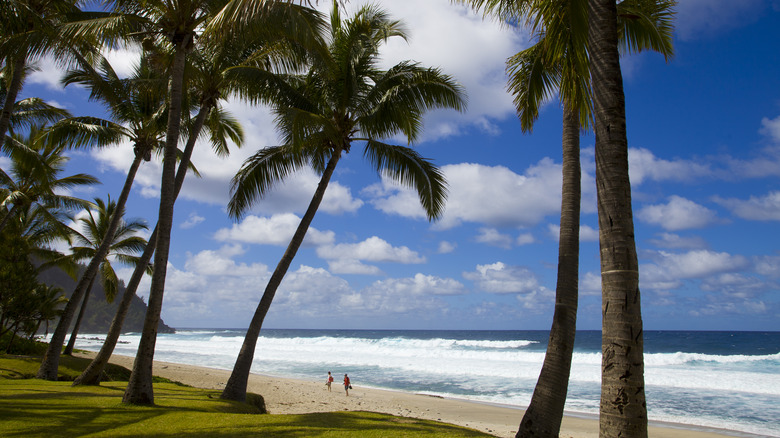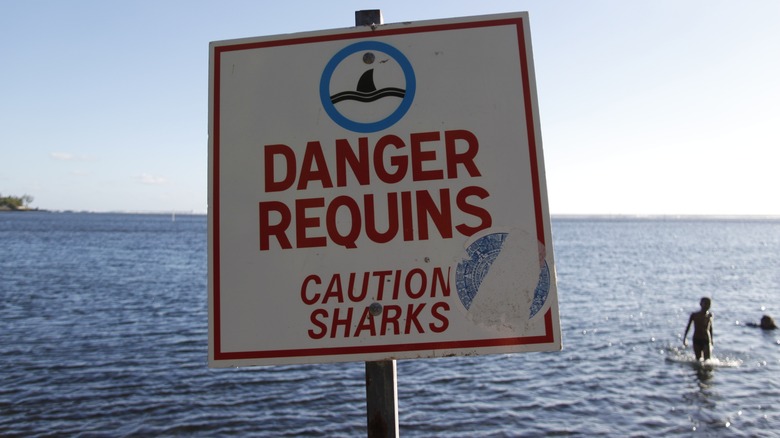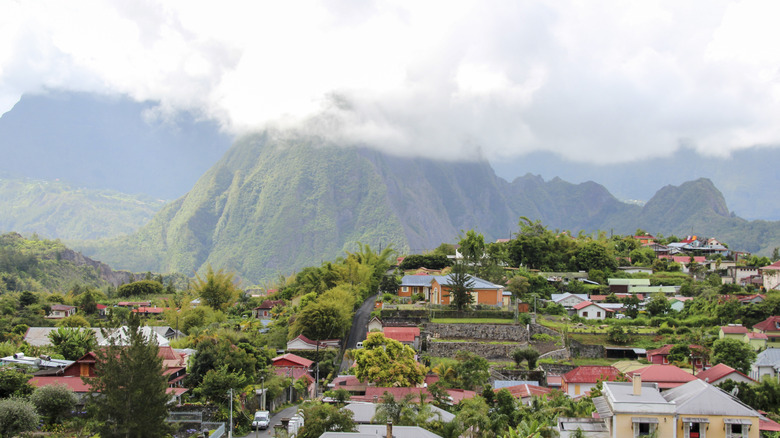Réunion Island Is A Stunning Island You Should Visit But Never Swim At
France is a country blessed with stunning beaches, from the cliffs of Étretat, Normandy, to the sparkling bays of Cap Coz, Brittany. However, the destination is also home to some extremely dangerous beaches — although you won't actually find them within French borders. In the Indian Ocean east of Madagascar sits the beautiful yet underrated Réunion Island, a French territory known for its rugged hikeable landscapes and quaint towns such as Saint Denis and Saint Pierre. Unfortunately, it's also earned a reputation for having some of the world's most shark-infested beaches.
In the 10-year period between 2011 and 2021, 11 people were killed in shark attacks around the island. Other non-fatal attacks have also taken place in Réunion Island waters in recent years, often involving the aggressive bull shark species. The predators are thought to travel on a shark-infested path between Australia and South Africa, placing the French island right in the middle of the route. Some experts speculate that the sharks are attracted to the area's active volcano, Piton de la Fournaise, which helps create the murky waters bull sharks prefer to hunt in. While Réunion Island is worth visiting for a tropical getaway, you should think twice before taking a dip at just any of its beaches.
Is it legal to swim at Réunion Island?
Visit one of the beaches at Réunion Island and there's a good chance you'll see a "no swimming" sign posted nearby. That and other water activities are banned in many spots across the French territory. However, not everyone abides by the rules. Some, such as the local surf community, are known to take their chances and enter the waters, often without any legal repercussions. Many surfers have adapted to the shark-infested waters by using surfboards with special attachments that create an electrical field believed to repel sharks. Unfortunately, not all risk takers get out alive. In 2019, one tourist was tragically killed by a shark while surfing in a restricted zone.
There are some swimming areas in Réunion Island that have been deemed safe enough to access, including those that have nets and fencing to ward off hungry sharks. Lagoons with coral are also thought to have a natural barrier keeping predators out. A few beaches that typically allow swimming include Plage des Roches Noires, Plage d'Étang-Salé, and Plage de Boucan Canot. However, conditions can change over time. To stay safe at the beach, always check the signs posted on the shore before entering the water.
The fascinating history of Réunion Island
Réunion Island hasn't been around for as long as sharks, but the island has plenty to intrigue and engage the history-conscious traveler. The island was settled by the French in the 17th century during Europe's mad dash to sweep up all the uninhabited land it could find, and it soon became an economic driving force for the French Empire. Unfortunately, that means sugar plantations built on the blood and sweat of enslaved people. The island remains under French control (home to the country's third largest naval base), one of only two spots in the Southern Hemisphere where the Euro is the official currency (a fun fact for all you trivia buffs).
Of course, there is more to La Réunion than naval bases and currency quirks. The aforementioned Piton de la Fournaise is one of the most active volcanoes on the planet, with an eruption as recent as September 2022. The volcano is an integral part of Réunion National Park, a UNESCO-protected region of natural beauty that covers 42% of the island. The national park is home to several unique species, from the Réunion cuckooshrike to the Reunion Island day gecko and beyond. The mountains are stunning, perfect for adventurous hikers, and far enough away from the sea to not have to worry about those sharks.


